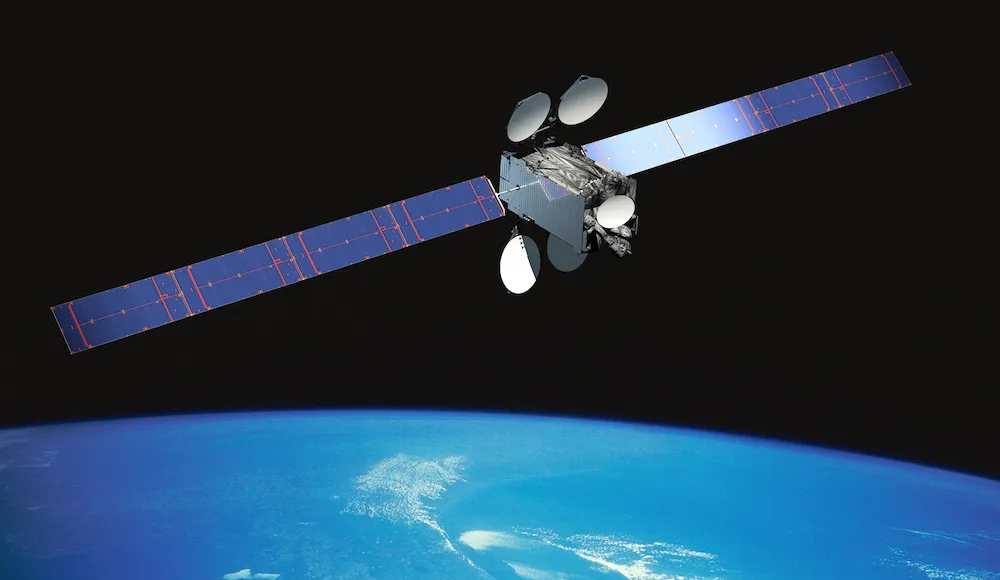Boeing-made satellite exploded in geostationary orbit

Boeing faces yet another setback as the Intelsat-33e satellite, which it built for Intelsat, broke apart in geostationary orbit, leaving dozens of fragments behind, according to the U.S. Space Force. The satellite’s collapse on October 19 adds to Boeing’s growing list of challenges. This marks the second failure in orbit for a satellite from this production series.
This news comes just a week after NASA replaced Boeing’s Starliner with SpaceX’s Crew Dragon for two crew rotation missions to the ISS in 2025, due to ongoing concerns about Boeing’s reliability. The Starliner had already experienced an engine failure that led NASA to deem it too risky for crew transport.
On October 19, the U.S. Space Force confirmed that Intelsat 33e had broken up, producing at least 20 pieces of debris. Intelsat later declared the satellite a total loss, stating that recovery was unlikely.
“U.S. Space Forces-Space (S4S) has confirmed the breakup of Intelsat 33E (#41748, 2016-053B) in GEO on October 19, 2024, at approximately 0430 UTC. Currently tracking around 20 associated pieces – analysis ongoing. S4S has observed no immediate threats and is continuing to conduct routine conjunction assessments to support the safety and sustainability of the space domain,” according to an alert posted on SpaceTrack, a website owned by the U.S. Department of Defense’s space-tracking platform.

Boeing-Made Satellite Breaks Apart in Orbit
Space News also reported that Douglas Hendrix, CEO of ExoAnalytic Solutions, confirmed that the U.S.-based space-tracking company had identified 57 pieces of debris related to the breakup as of October 21.
“We are alerting operators of any spacecraft we believe could be at risk of collision,” Hendrix stated in an email.

Launched in August 2016 and entering service in January 2017, the Intelsat 33e satellite was part of Boeing’s EpicNG series, known for its high throughput. However, it experienced a main engine failure during its early operations, delaying its service by three months.
In August 2017, Intelsat reported further issues with the satellite’s fuel usage, leading to an estimated service life reduction of 3.5 years. As a result, Intelsat filed a $78 million insurance claim, though the satellite was uninsured at the time of its final breakdown.
The company is now working with Boeing and government agencies to investigate the cause of the failure. A Failure Review Board has been established, and operators of nearby spacecraft have been alerted about potential collision risks.
Intelsat said in an Oct. 19 news release that it was working with satellite maker Boeing to address an anomaly that emerged earlier that day, but added it was “unlikely that the satellite will be recoverable.”
“The satellite experienced an anomaly on October 19, resulting in a loss of power and service to customers. We are working closely with Boeing, the satellite manufacturer, to address the situation. Based on the information available to us, we believe it is unlikely that the satellite will be recoverable.”
Then in an Oct. 21 news release update, Intelsat said the satellite was a total loss.
“IS-33e Update, October 21, 2024: Intelsat reported today that the anomaly previously disclosed on October 19 has resulted in the total loss of the Intelsat 33e satellite. We are coordinating with the satellite manufacturer, Boeing, and government agencies to analyze data and observations. A Failure Review Board has been convened to complete a comprehensive analysis of the cause of the anomaly. Since the anomaly, Intelsat has been in active dialogue with affected customers and partners. Migration and service restoration plans are well underway across the Intelsat fleet and third-party satellites,” Intelsat said.
Intelsat added that it is also moving affected customers to other satellites within its fleet or to those operated by third parties. This is the second major failure in the EpicNG series, with Intelsat-29e declared a total loss in 2019 after just three years in orbit, likely due to either a meteoroid impact or a wiring flaw exacerbated by solar activity.

EpicNG series satellite (concept). Source: Intelsat




